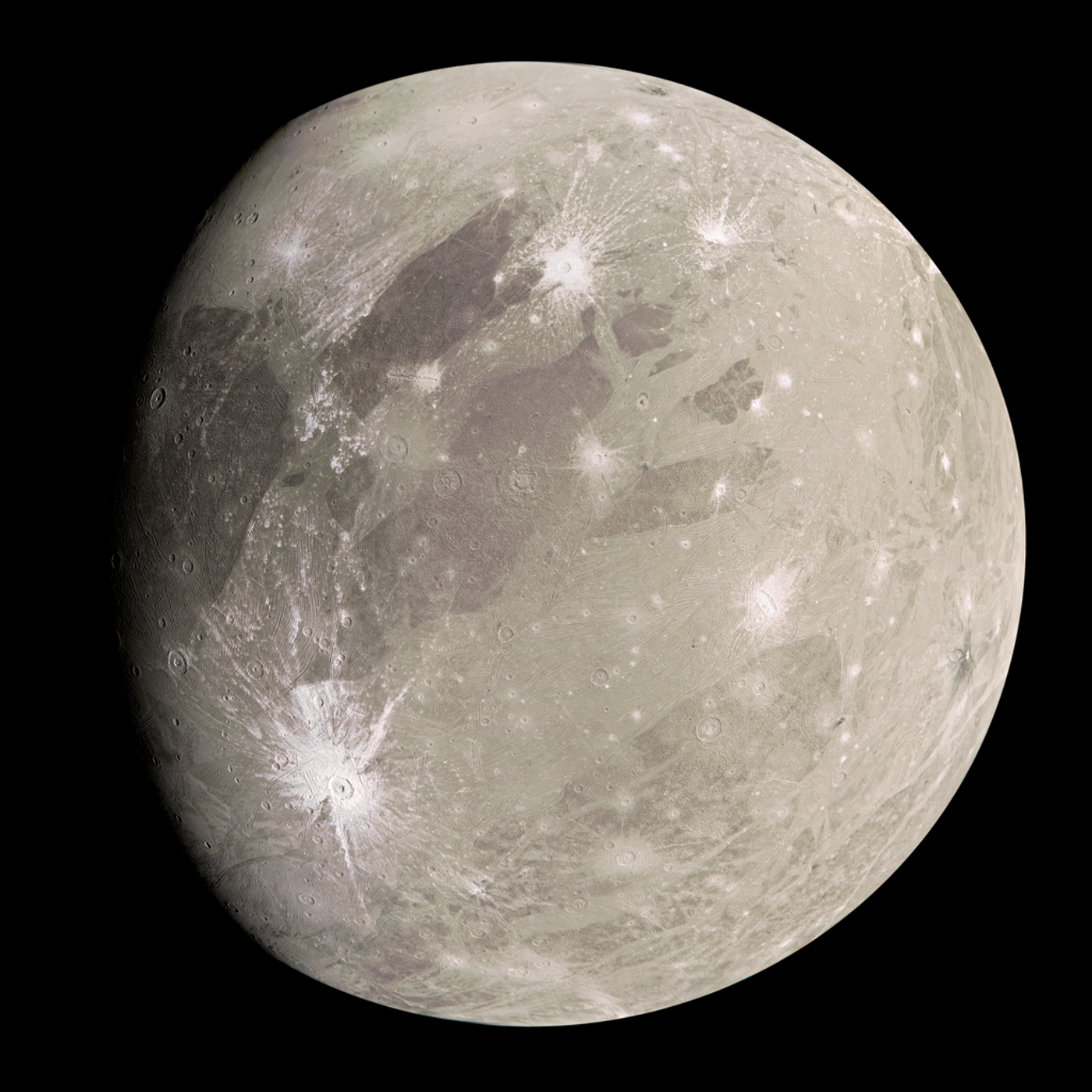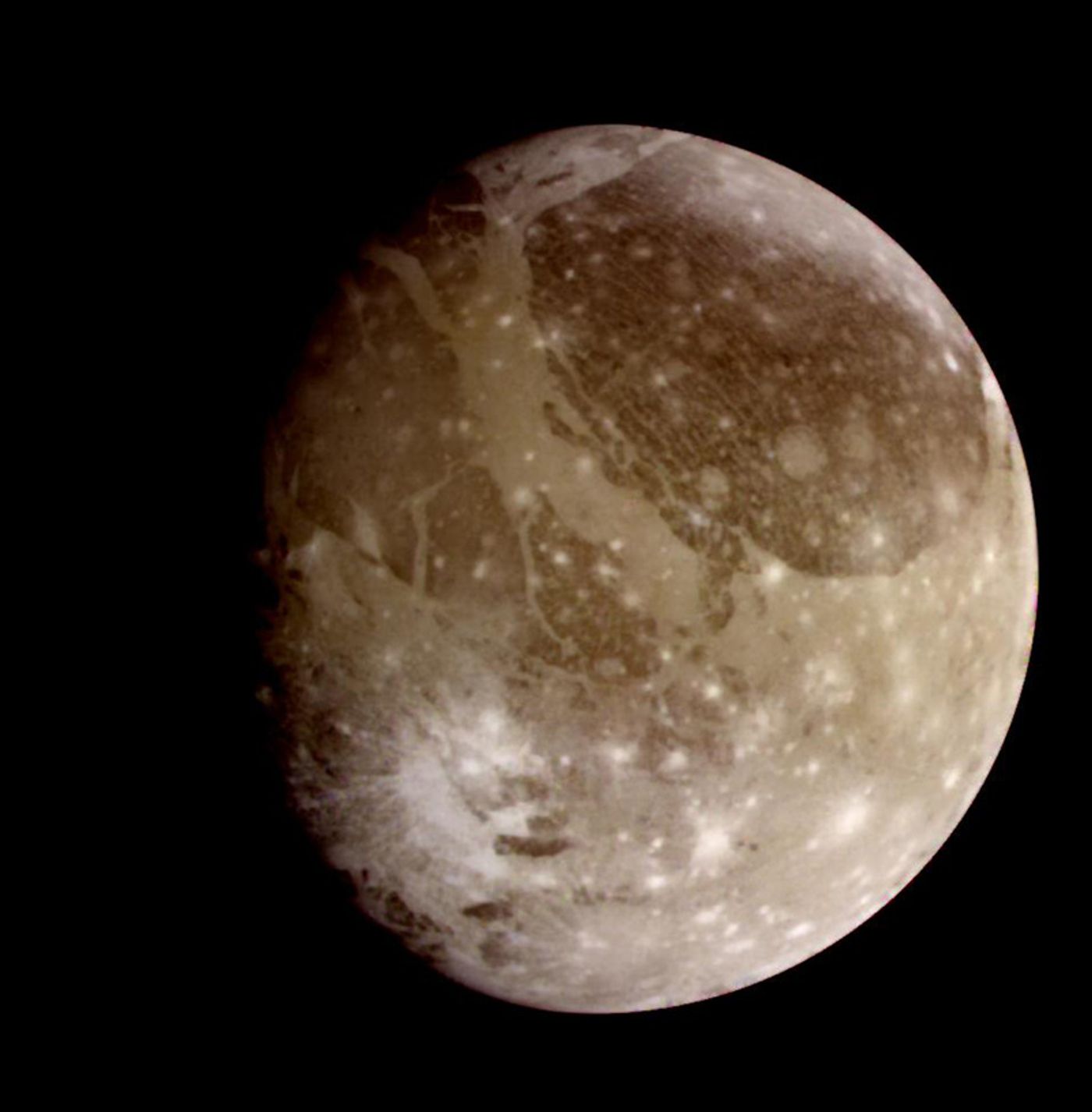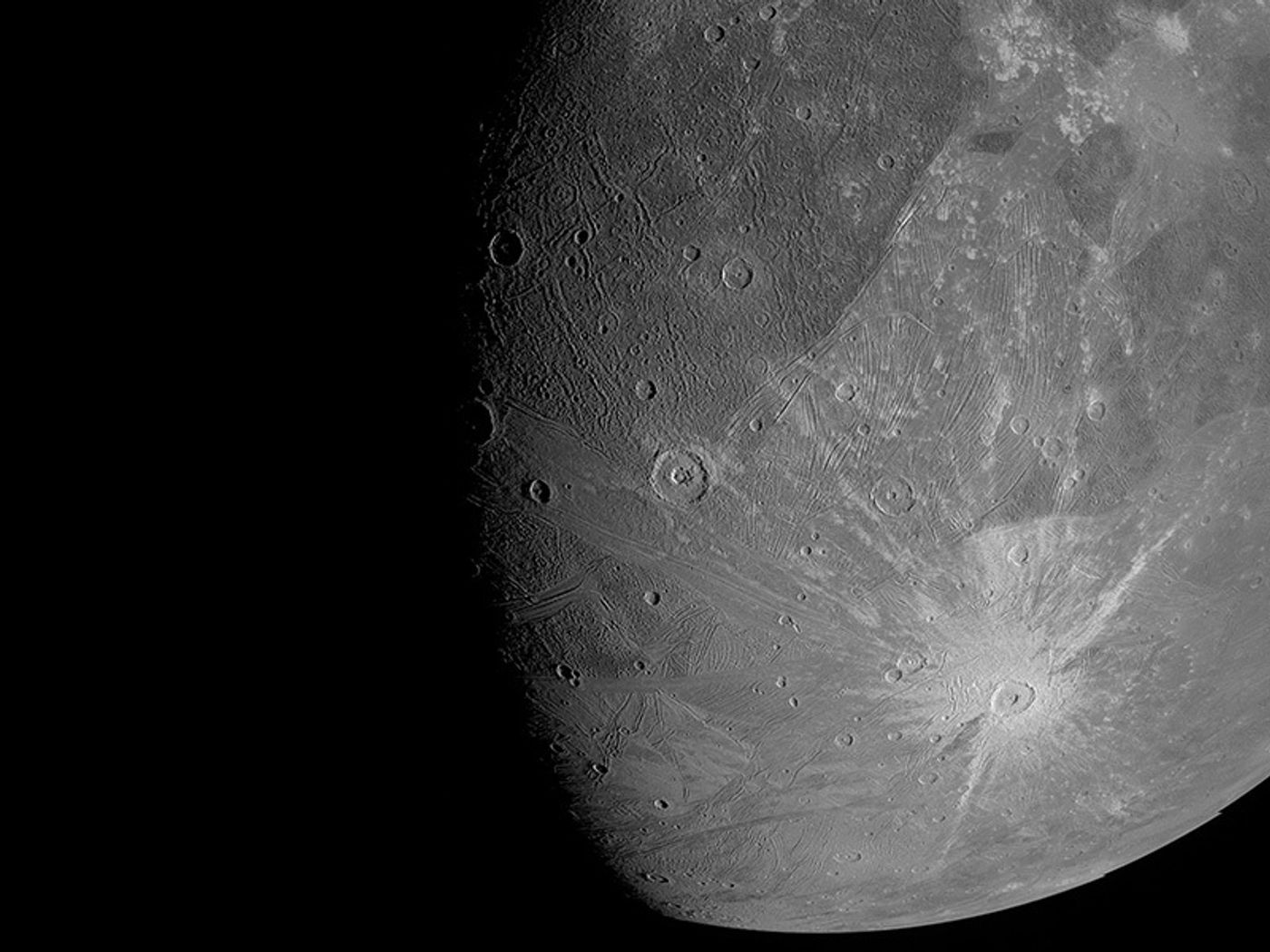Jupiter's Cratered, Banded, and (Possible) Ocean Moon, Ganymede | Solar System Moons
Image of Ganymede take by NASA's Juno in 2021. (Credit: NASA/JPL-Caltech/Southwest Research Institute (SwRI)/Malin Space Science Systems (MSSS)/Kevin M. Gill)
Labroots previously examined the planet Jupiter and some of its Galilean Moons—Io, Europa, Ganymede, and Callisto—which exhibit a myriad of geological activity and surface features. Here, we will make an up-close look at the third Galilean Moon, Ganymede, to include its discovery and exploration history.
Ganymede was discovered along with the other Galilean Moon by Galileo Galilei in January 1610 via his homemade telescope. Like the other Galilean Moons, Ganymede appeared as a small dot near Jupiter, which were all initially interpreted to be “stars”, but it only took Galileo mere days to deduce these were actually moons orbiting the giant planet.
Ganymede holds the proud distinction of being the largest moon in our solar system, and even bigger than the planet Mercury, measuring 1,635 miles (2,631 kilometers) for its radius, and orbits Jupiter at a distance of approximately 665,000 miles (1.07 million kilometers), or almost three Earth-Moon distances.
The first spacecraft to visit Ganymede was Pioneer 10 in 1973, but only returned crude images of this distant world. It wasn’t until NASA’s Voyager 1 and 2 visited the Jupiter system than scientists got their first up-close images of Ganymede, revealing impact craters and bright bands strewn across its surface. NASA’s Galileo spacecraft in the 1990s later discovered that Ganymede possessed a magnetic field, while also capturing the sounds of Ganymede, to include static and whistling. NASA’s Juno spacecraft gave NASA the best images of Ganymede in June 2021, returning surface features in the best detail than any previous spacecraft. A 2021 study published in Nature used data gathered from the Hubble Space Telescope to indicate the possibility of a sublimated water atmosphere on Ganymede, and Hubble previously indicated in 2015 the potential for a subsurface water ocean on Ganymede, as well.
Image of Ganymede from NASA's Galileo spacecraft taken in June 1996. (Credit: NASA/JPL-Caltech)
Image of Ganymede taken by NASA's Juno in June 2021. (Credit: NASA/JPL-Caltech/SwRI/MSSS)
What new insights will we discover about our solar system’s largest moon in the coming years? Only time will tell, and this is why we science!
Sources: Labroots, NASA, NASA (1), NASA (2), NASA (3), NASA (4)
As always, keep doing science & keep looking up!











